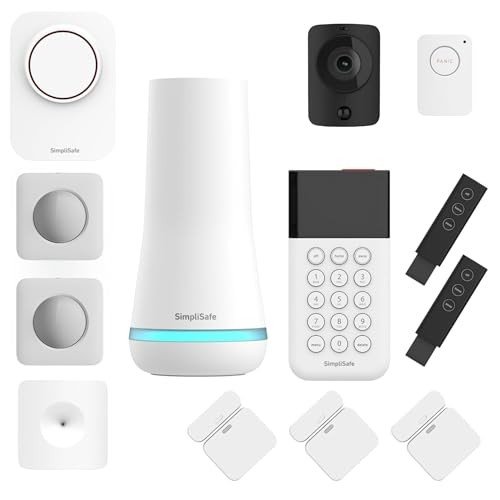Industrial Lamps in the UK: Illuminating Industries and Workspaces
In an age where efficient lighting solutions play an essential role in boosting performance and safety in different industrial settings, industrial lamps have become necessary tools for factories, storage facilities, workshops, and more. The UK's market for industrial lighting is rapidly developing, driven by developments in innovation, a growing concentrate on energy performance, and rigid safety policies. This post explores the different types of industrial lamps available in the UK, their applications, and the considerations that should be made when picking the appropriate lighting options for industrial environments.
Comprehending Industrial Lamps
Industrial lamps are created specifically for use in a variety of industrial settings. They provide the required illumination while likewise considering the unique obstacles positioned by such environments, including dust, wetness, high ceilings, and variable temperature levels. Table Lamps UK can be found in numerous types, including LED, fluorescent, and metal halide lighting, each with its own set of characteristics and advantages.
Kinds Of Industrial Lamps
LED Industrial Lamps:
- Description: LED (Light Emitting Diode) industrial lamps are energy-efficient, long-lasting, and supply exceptional lighting.
- Advantages:
- Energy effectiveness (up to 80% less energy usage)
- Long life-span (as much as 50,000 hours)
- Low heat emission
- Instant brightness with no flickering
- Applications: Factories, warehouses, and building websites.
Fluorescent Industrial Lamps:
- Description: These lamps give off light through the excitation of gas, typically utilized in environments needing uniform illumination.
- Benefits:
- Good color rendering
- Affordable
- Different shapes and sizes
- Applications: Workshops, garages, and assembly lines.
Metal Halide Industrial Lamps:
- Description: This type of gas discharge lamp produces an intense, white light and is frequently used in large areas.
- Advantages:
- High strength and brightness
- Exceptional for sports venues, parking lots, and large industrial facilities
- Applications: Warehouses, filling docks, and outdoor areas.
Contrast Table of Different Types of Industrial Lamps
| Lamp Type | Energy Efficiency | Lifespan | Brightness | Application Areas |
|---|---|---|---|---|
| LED Industrial Lamps | Up to 80% | Up to 50,000 hours | Really High | Factories, Construction Sites |
| Fluorescent | Moderate | 7,000 - 15,000 hours | Moderate to High | Workshops, Garages |
| Metal Halide | Moderate | 15,000-20,000 hours | High | Storage Facilities, Outdoor Areas |
Choosing Industrial Lamps
When picking industrial lamps, several factors need to be considered. These include:
- Type of Application: Different areas have varying lighting needs. For example, high-precision tasks might require brighter, more focused lighting compared to general work space lighting.
- Energy Efficiency: With rising energy costs and environmental concerns, selecting lamps with high energy effectiveness can result in considerable expense savings in time.
- Life expectancy: Longer-lasting lamps lower upkeep expenses and downtime, making them preferable in busy industrial settings.
- Security Standards: Compliance with safety regulations is crucial. Industrial lamps should be created to stand up to extreme conditions, consisting of wetness, dust, and effects.
- Expense: While in advance expenses matter, the long-lasting savings achieved via energy-efficient and lasting lamps need to likewise be taken into consideration.
Benefits of Appropriate Industrial Lighting
- Enhanced Safety: Proper lighting lowers the threat of mishaps and injuries in industrial environments.
- Increased Productivity: Adequate lighting promotes better exposure, aiding in the effectiveness of workers.
- Expense Savings: Energy-efficient lamps lead to lower electricity expenses and less regular replacements.
- Enhanced Quality Control: Good lighting enables much better assessment procedures, ultimately boosting item quality.
Regularly Asked Questions (FAQs)
Q1. How do I determine the best type of industrial lamp for my center?A1. Examine the particular lighting needs and conditions of your facility. Think about aspects such as the tasks being performed, the size of the area, and any regulative requirements.
Q2. Are LED lights worth the financial investment in an industrial setting?A2. Yes, LED lights offer significant long-lasting cost savings due to lower energy consumption and longer life expectancies, making them an economical choice in the long run.
Q3. Can I install industrial lamps myself?A3. While some people may have the skills to set up lamps, it is frequently suggested to work with a certified electrical contractor to guarantee compliance with safety requirements and local regulations.
Q4. What maintenance is required for industrial lamps?A4. Regular inspections for damage, cleansing of lights, and timely replacement of defective lamps are vital to keep ideal efficiency.
Q5. What are the most recent patterns in industrial lighting technology?A5. Advances in smart lighting systems, including IoT (Internet of Things) combination and advanced energy management solutions, are at the forefront of industrial lighting innovation.
The right industrial lamps are important to ensuring security, performance, and expense efficiency in numerous industrial settings. The UK market uses a variety of lighting solutions, from LED lamps to fluorescent and metal halide choices, each ideal for different applications. By understanding the functions and advantages of these lighting types and taking crucial factors to consider into account, organizations can make educated choices that will brighten their work spaces effectively while optimizing performance and saving costs. Purchasing the right industrial lighting not only improves general ambiance however also cultivates a safer and more productive workplace.

